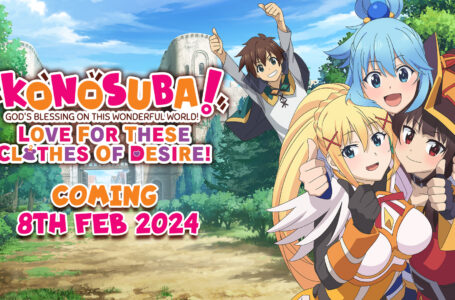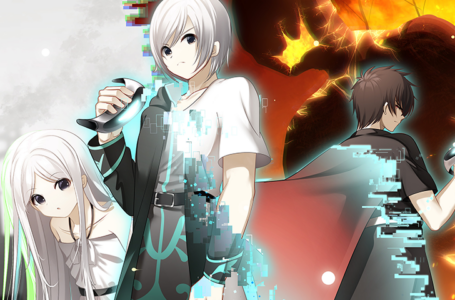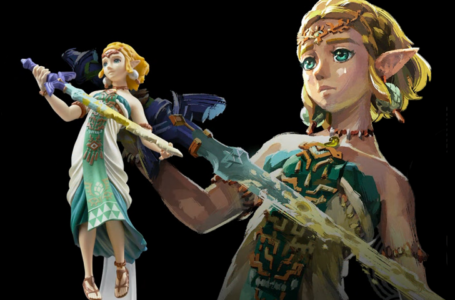Have you played… Frogun?
Frogun is a game that I knew I would like from the moment I saw it. From the distinctive buck-toothed anime-style grin of the childish protagonist to the PS1-style low-poly aesthetic, everything about Frogun screamed “you will have a good time with this”. But I’ve only just got around to trying it.
Thankfully, I was right. I have had a good time with Frogun so far, and I’m looking forward to spending a lot more time with it.
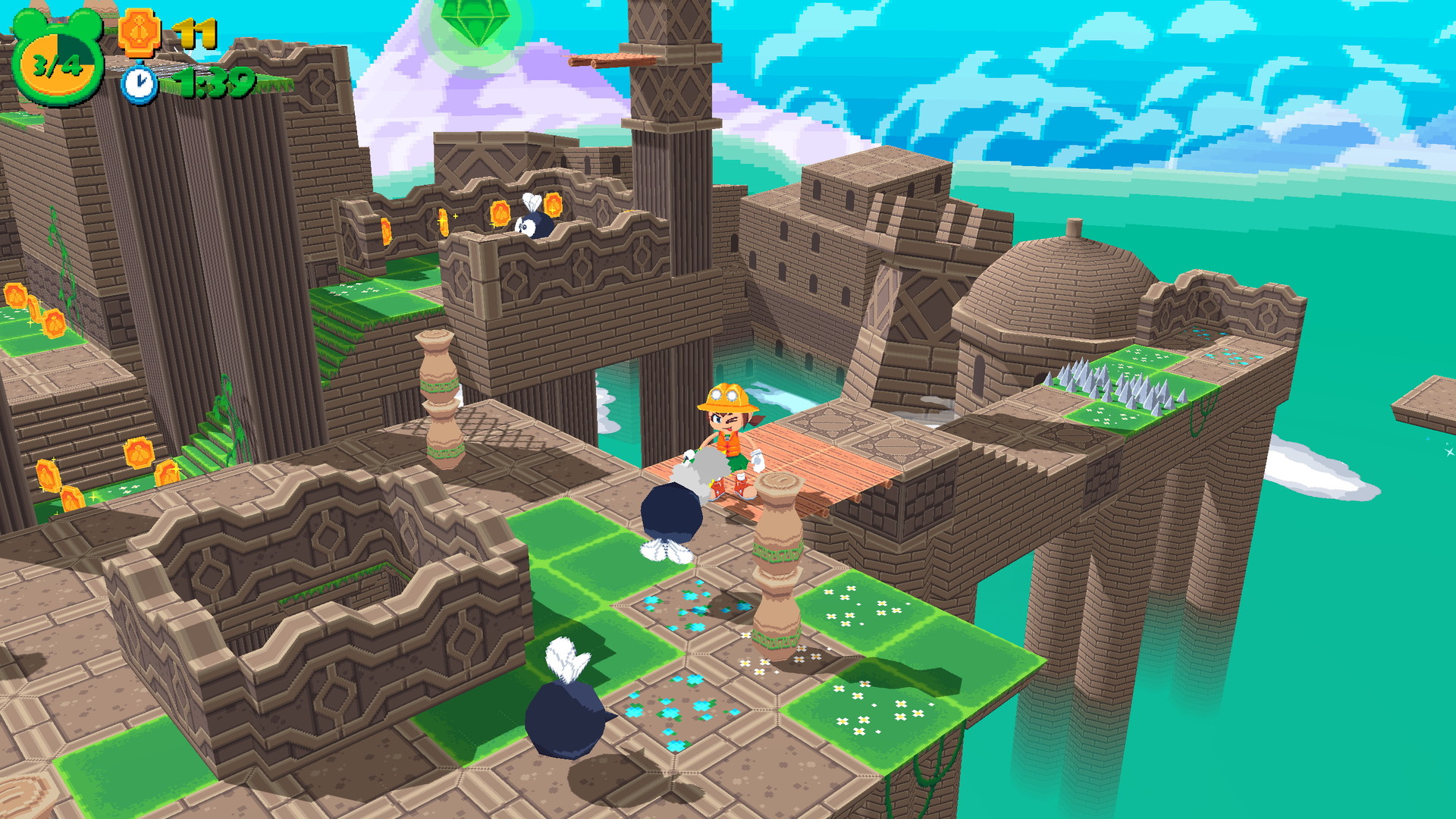
Frogun was first released in August of 2022, and is the work of a developer known as Molegato. The game’s development was initially crowdfunded via Kickstarter, and it released digitally via publisher Top Hat Studios. This was subsequently followed by a limited physical release from Limited Run Games for Nintendo Switch, PlayStation 4 and PlayStation 5.
In Frogun, you take on the role of a young girl named Renata Hopps, whose archaeologist parents have rather irresponsibly left her outside a big old complex of ruins while they go inside and see what’s what. When they’re gone a lot longer than Renata is comfortable with, she decides to set off on her own expedition to find out what has happened to them. Thankfully, her parents left behind their Frogun, a seemingly sentient item of equipment that can both speak and shoot out a long, sticky tongue.
The Frogun is used in a variety of ways throughout the game. It can be used as a grappling hook to cross large gaps, and it can also be used to grab and throw both items and enemies. Renata can also jump on enemies’ heads to defeat them, but is otherwise fairly limited in her offensive capabilities.
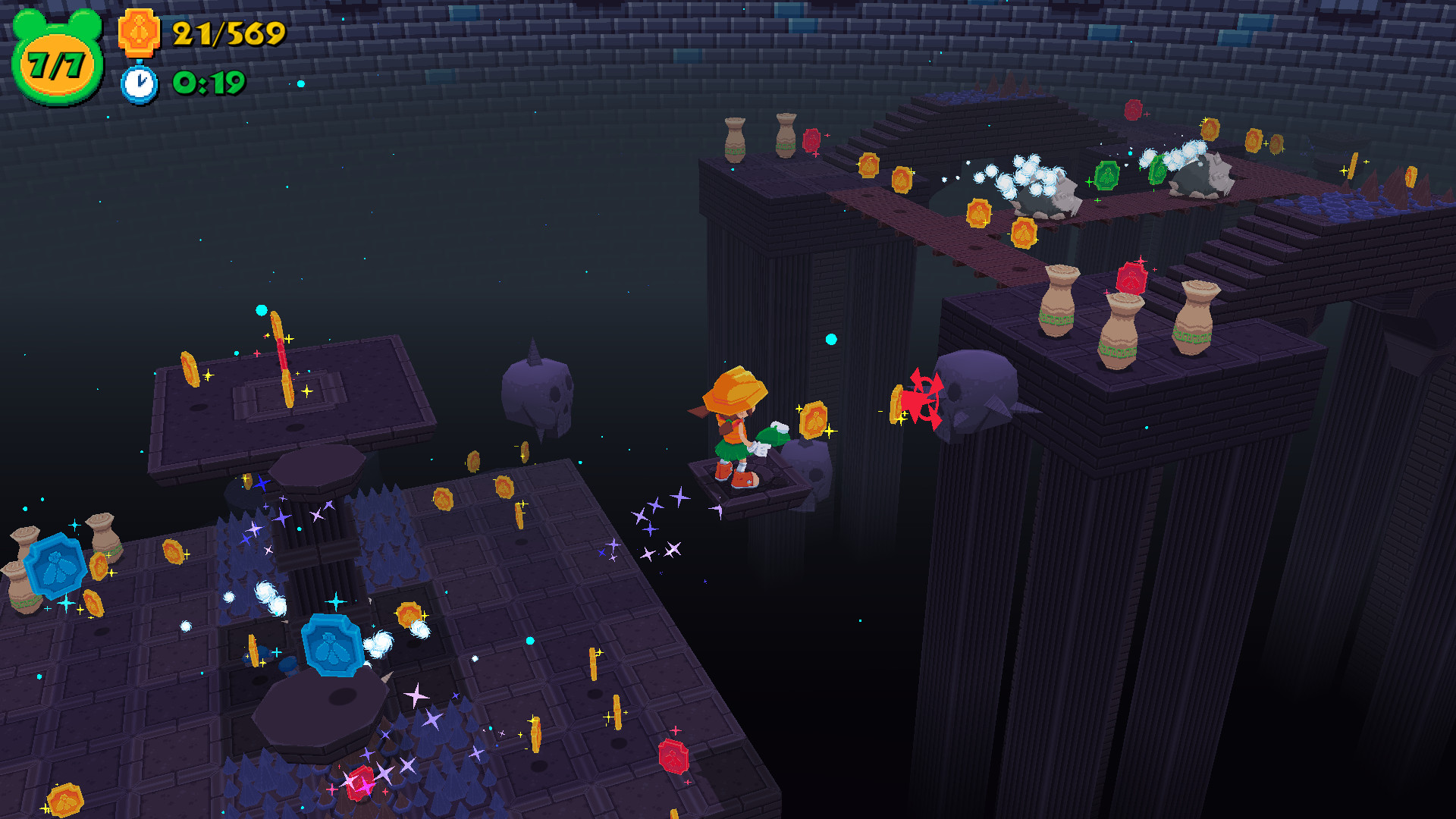
One of the first things that will strike you about Frogun once you start playing is how deliberately slow-paced it is. Renata moves around the stages at a pace that is best described as “pootling”, and the game feels very much like classic isometric perspective quasi-3D titles from the 8- and 16-bit eras, with the main difference being that you have complete freedom to move the camera around as you see fit.
Far from being annoyingly slow, this deliberate pacing is something that makes Frogun really stand out. Levels feels less like tests of agility and more like the puzzles that they are, and you always feel like you have plenty of time to perform the actions required in order to succeed. For the most part, if you find yourself thinking that you need split-second timing to achieve something, you’re probably missing a much easier way to do it.
Each level in Frogun has a series of objectives to complete, and fully clearing the game requires that you accomplish all of these.
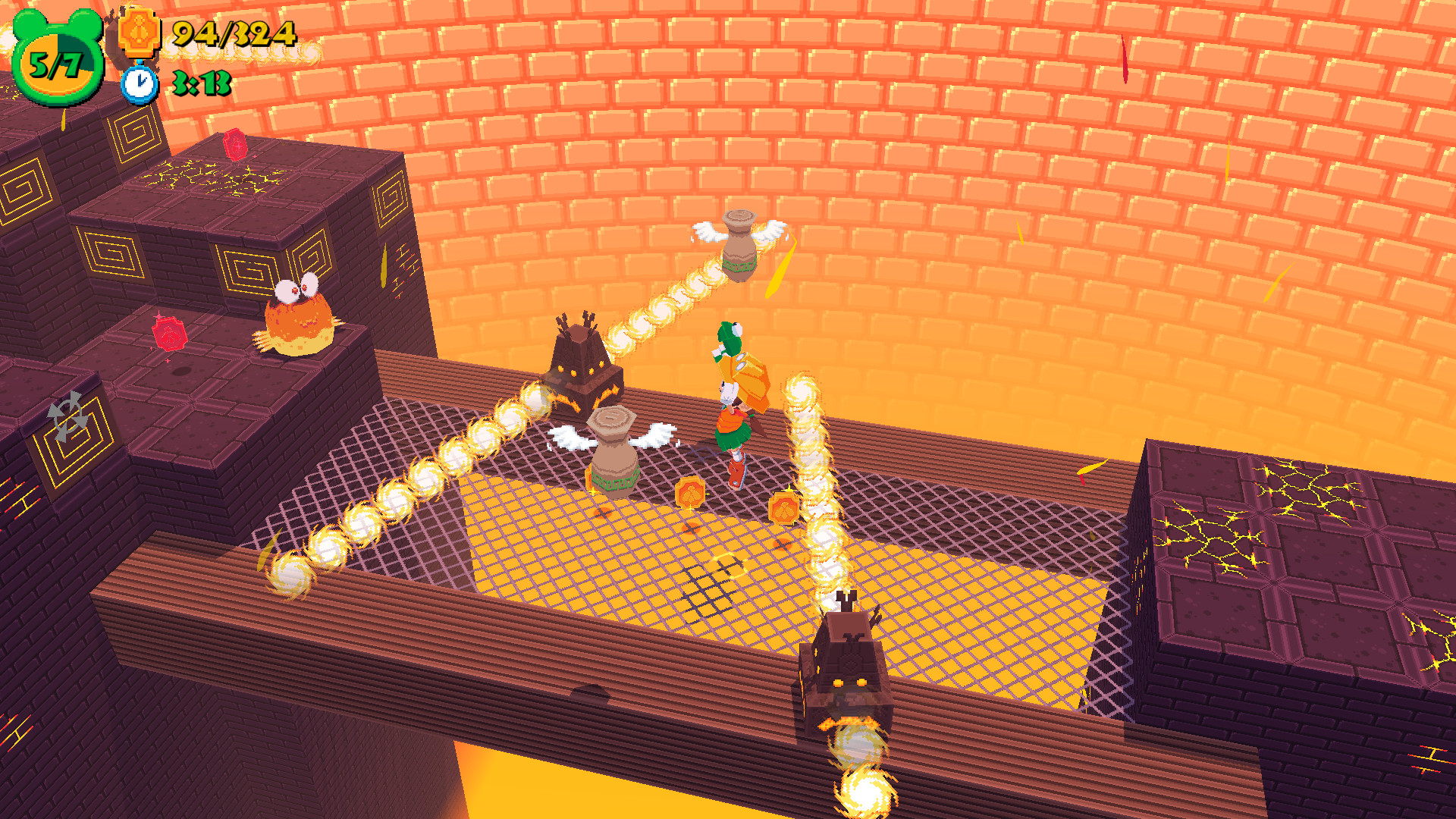
Firstly is simply clearing the stage; straightforward enough. Then there’s a set number of coins, all of which must be acquired for a particular award. Then there are two crystal eyes that are generally placed somewhere near but not quite on the critical path through the level. Then there’s a crystal skull, which requires you to find a hidden hole, drop down it and complete a self-contained platforming trial to acquire it.
Finally, there are additional rewards available for clearing the stage without dying, within a particular time limit and, for the pros, within an “expert” time limit. On top of all that, each stage also features a note that advances the game’s overall story in some way.
The nice thing is that you don’t need to pull all these off in one go. Generally speaking, the most efficient approach seems to be to take your time on your first visit, exploring the level fully while you acquire all the coins, the crystal eyes, the crystal skull and the note. After that, you should know the level well enough to be able to run through it within the target time without dying, and perhaps even nail the expert time along the way, too.
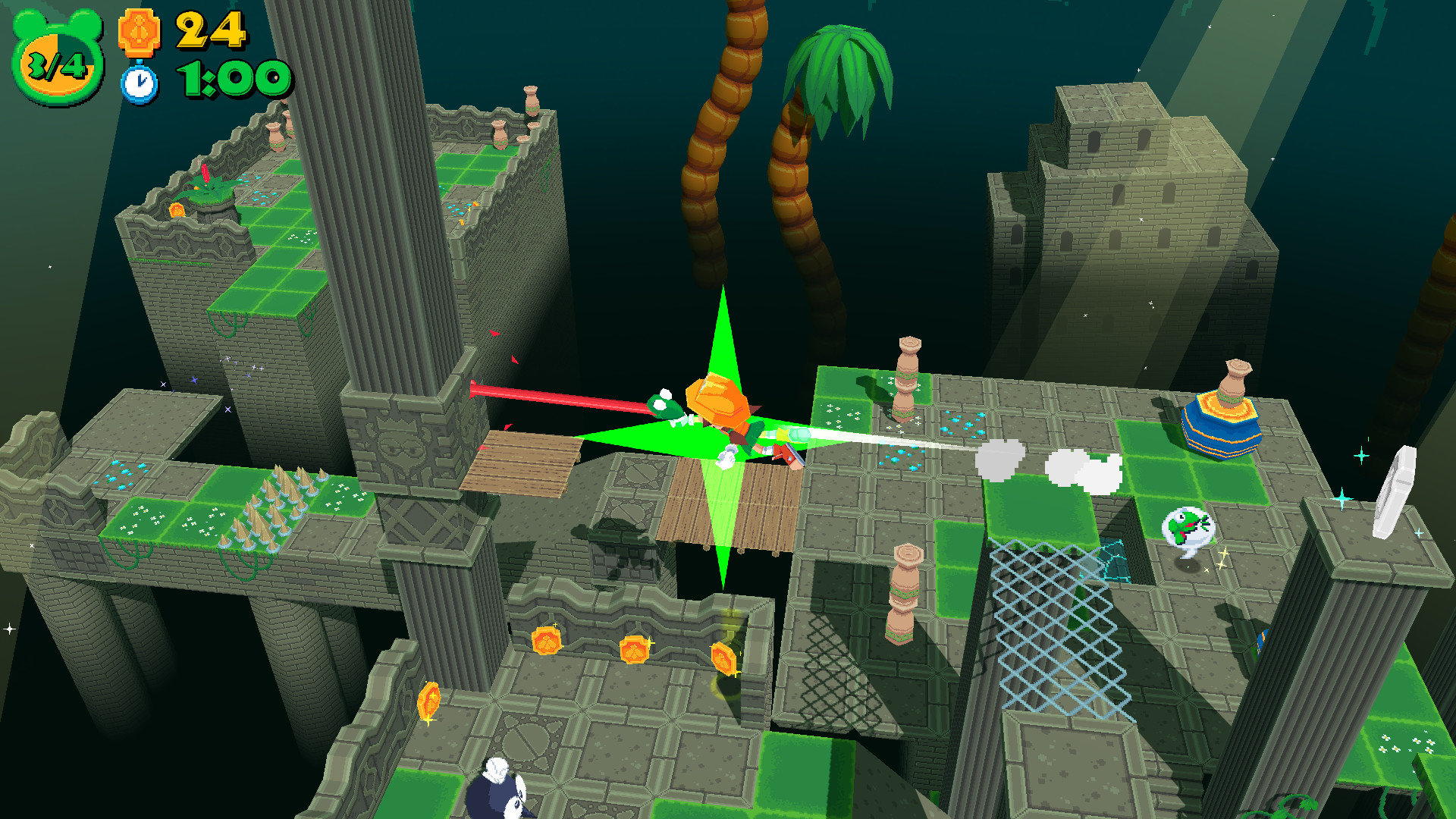
You don’t need to achieve all these objectives to progress in Frogun — though as you proceed through the game’s levels, certain rewards will only become available to you if you’ve achieved certain quantities of each of them — but it’s so simple and straightforward to tackle these challenges it’s hard not to get drawn into wanting to perfect each stage as you encounter it. Most levels are a couple of minutes at most if you romp straight through them — though fully exploring some to find all the items will likely take you a lot longer.
Frogun’s level design deliberately eschews realistic environments in favour of levels built from cubes floating in space. This gives the game as a whole a distinctive, blocky appearance even outside its low-poly characters and deliberately pixelated textures. It also makes the platforming elements quite easy to judge, because you’ll always have a clear understanding of how high and far Renata is able to jump — and how far the Frogun can reach.
The levels start out very straightforward and gradually introduce you to challenges that you’ll need to think creatively about in order to solve. These challenges rarely form the critical path through the level, but shiny coins and sparkly gems provide a considerable incentive for you to work out exactly how you might, say, clear a gap that is much larger than Renata would normally be able to jump across — and which the Frogun can’t quite reach over.
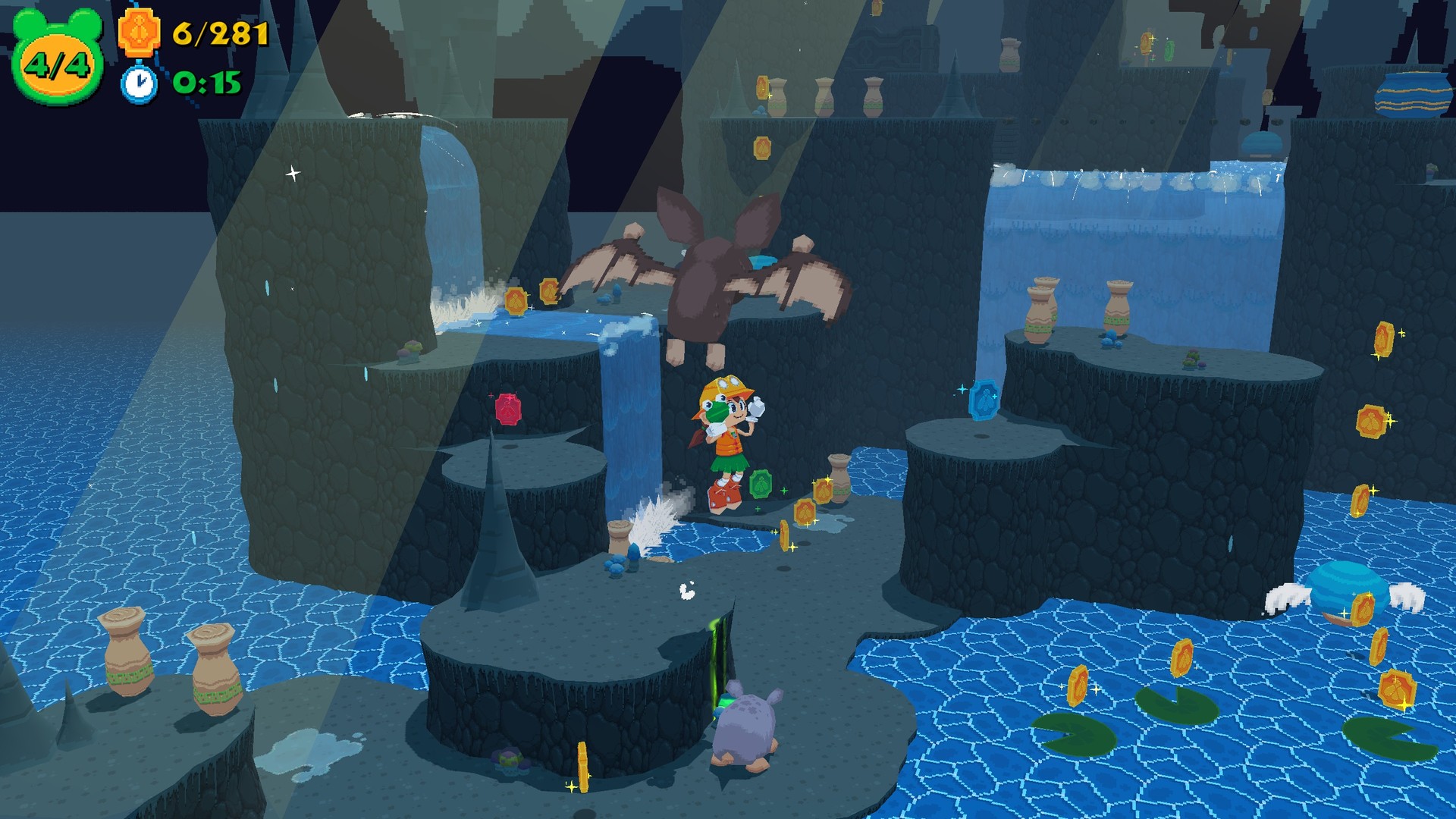
The difficulty escalates at an excellent pace and always feels fair. There’s no limit on lives during levels, and checkpoints are fairly generously placed — plus touching a checkpoint at any time restores Renata’s health to full, even if she’s already previously triggered said checkpoint. This isn’t to say you can brute force your way through the game’s tougher challenges; you’ll still have to get to grips with its mechanics to fully succeed at it, but there’s never a point where you feel the game is actively fighting you. Rather, it’s pushing you a little bit at a time to succeed and take more calculated risks.
And all this is complemented by an absolutely delightful aesthetic. Interestingly, rather than committing fully to the “PS1” aesthetic established by the 3D graphics, Frogun complements its visuals with some distinctly more old-school audio that sounds like it’s from an ’80s Nintendo game. Renata makes an endearing little “wik-wak” noise as she walks like Mario in Donkey Kong, for example, and most other sound effects sound like they were synthesised on an old sound chip rather than digitised.
Rather than feeling anachronistic, this all works well; Frogun is clearly designed to be an homage to classic games rather than a slavish recreation of one specific system’s output. And this is evident in all aspects of its design, from its gameplay, which wouldn’t have been out of place in an Ultimate Play The Game “Filmation” adventure on the Spectrum, to its visuals and sound design.
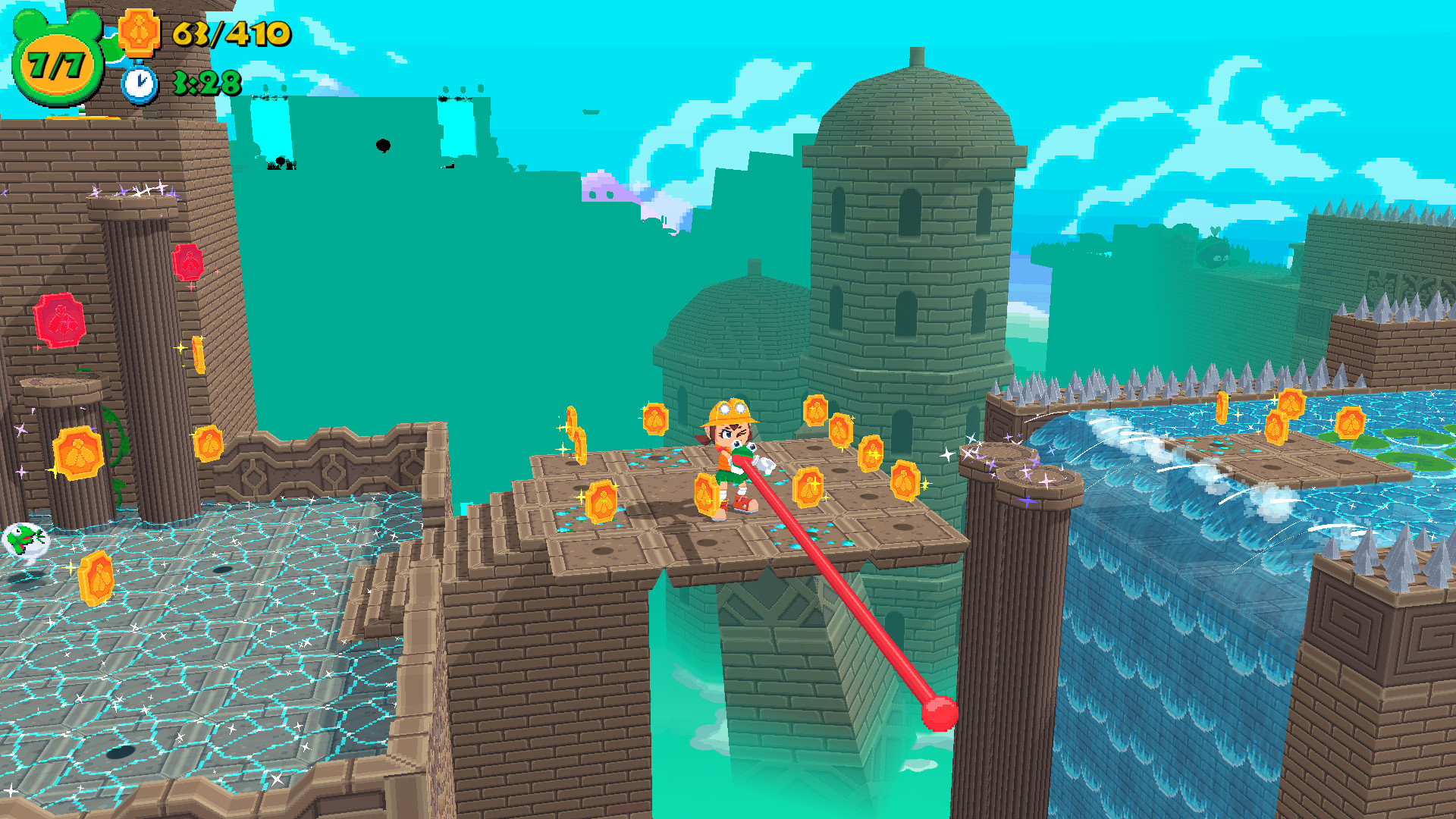
All in all, Frogun is an absolute delight. For some, its slow pace might be a bit of an acquired taste — but for those who are up for what it’s offering, it’s a highly recommended addition to your platformer collection.
Join The Discussion
Rice Digital Discord
Rice Digital Twitter
Rice Digital Facebook
Or write us a letter for the Rice Digital Friday Letters Page by clicking here!
Disclosure: Some links in this article may be affiliate links, which means we may earn a small commission if you make a purchase after clicking on them. This is at no additional cost to you and helps support Rice Digital!
- Letter from the Editor: passing the torch - June 30, 2023
- Super Woden GP 2 is looking promising - June 30, 2023
- Inti Creates is making a 32 bit-style Love Live action platformer - June 26, 2023




